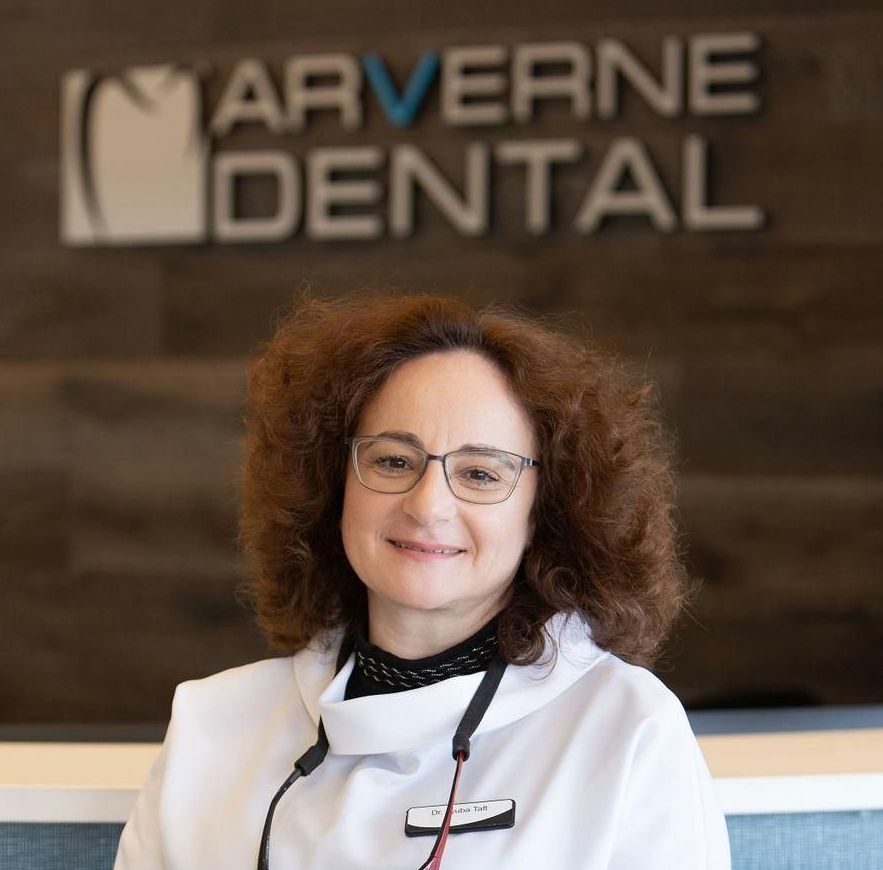Arverne Dental - Dental Crown Lengthening in Rockaway Beach, NY
If you're looking for a trustworthy dental care provider in Rockaway Beach, NY, look no further than Arverne Dental. With a team of highly qualified dental professionals, including Dr. Taft, Arverne Dental is dedicated to providing patients with personalized and comprehensive dental care. Whether you need routine dental checkups or more specialized treatments like dental crown lengthening, Arverne Dental has the expertise and state-of-the-art technology to help you achieve optimal oral health. You can rest assured that you're in good hands with Arverne Dental.
What is Dental Crown Lengthening?
Dental crown lengthening consists of a specialized surgery designed to expose the tooth structure more by reshaping surrounding gum tissue and, if necessary, underlying bone. It is important to establish a solid foundation for cosmetic or restorative dental treatments. Take a look at some of the most common reasons for dental crown lengthening.
Restorative Dentistry for Damaged Teeth
When a tooth is severely damaged by decay, trauma, or fracture, there may not be enough healthy tooth structure left above the gumline to perform a proper restoration. The dental crown lengthening procedure addresses this problem by:
Exposed Healthy Tooth Structure: This procedure exposes enough tooth structure to hold a filling or crown.
Preventing Further Decay: Reducing the gum overgrowth minimizes areas where bacteria can flourish, preventing further decay.
Proper Fitting for Crowns and Fillings: By exposing enough tooth structure, the dentist can ensure that crowns and fillings are fitted snugly, securely, and comfortably, promoting dental health over time.
Improve Smile Aesthetics
The "gummy smile,” also known as a "gummy mouth," is caused by an excess of gum tissue covering the teeth. This causes them to appear shorter and can negatively impact the appearance of your smile. The aesthetics of a smile can be significantly improved by dental crown lengthening.
Reducing Extra Gum Tissue: This procedure involves reshaping the gum tissue and removing excess tissue to expose more of the teeth' surface.
Create Symmetry and Balancing: By exposing a greater amount of tooth surface it will improve the proportions between gums and teeth, resulting in symmetry and balance.
Confidence Booster: An attractive smile can boost self-esteem and give patients the confidence they need to smile.
Other Reasons for Dental Crown Lengthening
Dental crown lengthening is recommended not only for aesthetic and restorative reasons but also for:
Access Deep Decay and Fractures: Allows removal of decay or fractures below the gumline.
Correction of Uneven Gumlines: When gum recession is caused by overgrowth or asymmetry, a more even gum line can be created.
Dr. Lyuba Taft and her team at Arverne Dental are dedicated to providing precision and care with this procedure. They want patients to receive the best results. Dental crown lengthening can be used for cosmetic or health reasons. It is an effective way to restore the beauty and functionality of your smile.
Get the most out of it!
New Patient Special
Exam, and all Necessary X-Rays for only $99
*Restrictions may apply
Why Choose Arverne Dental for Dental Crown Lengthening?
Selecting the right dental practice to perform crown lengthening is important to the health of your teeth and the aesthetics of your smile. Why Arverne Dental is the best choice for you:
Expertise:
Years of Experience: Dr. Lyuba Taft is a specialist in dental crown lengthening. She has years of experience and a thorough understanding of the treatment. Her vast experience ensures a precise surgical intervention, whether it is for restoring damaged or aesthetic teeth.
Crown Lengthening: Dr. Taft is a periodontal specialist specializing in dental crown lengthening. She understands how to reshape gum tissue and bone for optimal results.
Commitment To Excellence: Dr. Taft’s unwavering commitment to excellence ensures that each patient receives the best possible care. She focuses on both cosmetic and functional outcomes.
Customized Treatment Plans
Individualized Assessment: We provide care tailored to each patient’s unique needs. Dr. Taft will conduct a comprehensive evaluation during the first consultation to determine your dental goals and challenges.
Customized Solutions: Based on your assessment, you will receive a treatment plan that is tailored to you. It includes the steps of the procedure, the recovery expectations, and alternative treatment options; you will know exactly what to expect at each stage of the process.
Holistic Approach: Dr. Taft considers your oral health as she plans the crown-lengthening procedure. This ensures that the treatment is aligned with your long-term dental goals.
Advanced Technology
Modern Diagnostic Equipment: Our clinic uses state-of-the-art diagnostic equipment such as digital X-rays and 3-D imaging to accurately assess gum tissue and levels of bone. Dr. Taft can plan the procedure using minimal invasiveness thanks to this precision.
Laser Dentistry (if applicable): In some cases, laser technology is used to reshape the gum tissue more accurately and with less discomfort. This promotes faster healing.
Efficient Treatments: By combining Dr. Taft’s expertise with the latest technology, we can ensure your treatment is efficient and effective. This reduces chair time and improves results.
Comfortable Experience
Gentle Techniques: Dr. Taft and her team at Arverne Dental are committed to using gentle techniques that minimize discomfort for patients.
Post-Operative Pain Management: Options for local anesthesia or sedation (if necessary) are available. Pain management strategies are included in post-operative care, and detailed instructions are provided for aftercare.
Calming Environment: We have designed our clinic to be a calm space where patients can feel comfortable. From the friendly staff to the relaxing decor, we strive to create an atmosphere of calmness and relaxation.
Comprehensive Post-Procedure Care
Follow-up: Dr. Taft offers detailed follow-up to monitor healing and address concerns. Regular checkups will ensure that gums heal correctly and crowns are securely placed.
Education: Our goal is to provide our patients with the knowledge and tools they need to maintain good oral health after a procedure and prevent future dental problems.
Dental Crown Lengthening Process
Diagnosis & Planning
Initial Consultation: Dr. Taft performs an oral examination, and digital X-rays are taken to evaluate the teeth and bone structure.
Treatment plan: Based on your individual needs, a customized treatment plan will be created for cosmetic or restorative purposes.
Anesthesia
Local Anesthesia: The area to be treated is numbed with local anesthesia. This ensures a painless treatment.
Surgical Procedure
Gum Tissue removal: Dr. Taft removes the excess gum tissue with care to expose more teeth.
Bone Reshaping (if needed): Sometimes, a small amount of bone can be removed to expose the teeth.
Suturing: The gum tissue is stitched back in place once the desired length has been achieved.
Post-Procedure Care
Instructions: You will receive detailed instructions on how to care for your wounds after surgery.
Pain Relief: Ice packs and over-the-counter pain relievers can help to manage discomfort.
After-Surgery Visit: A follow-up visit is scheduled to monitor the healing process and remove sutures if needed.
FAQs (Frequently Asked Questions)
Arverne Dental offers a wide range of periodontal treatments, including pocket irrigation. Our comprehensive services include:
Does dental crown lengthening hurt?
The procedure is done under local anesthesia to ensure a painless experience. After the procedure, some mild discomfort is possible. This can be treated with pain relief.
How much time does it take to perform the procedure?
The average procedure takes between 45 and 60 minutes, depending on how many teeth are involved.
When can I expect to get a crown following the procedure?
Before placing a permanent dental crown, the gums must heal for 6-8 weeks.
Is it safe to do dental crown lengthening?
It's safe and common when done by an experienced dentist like Dr. Taft.

Book Your Consultation Now!
Contact Arverne Dental if you believe you could benefit from dental crown lengthening. Our team of friendly professionals is available to answer all your questions and assist you in achieving a more healthy, beautiful smile.





